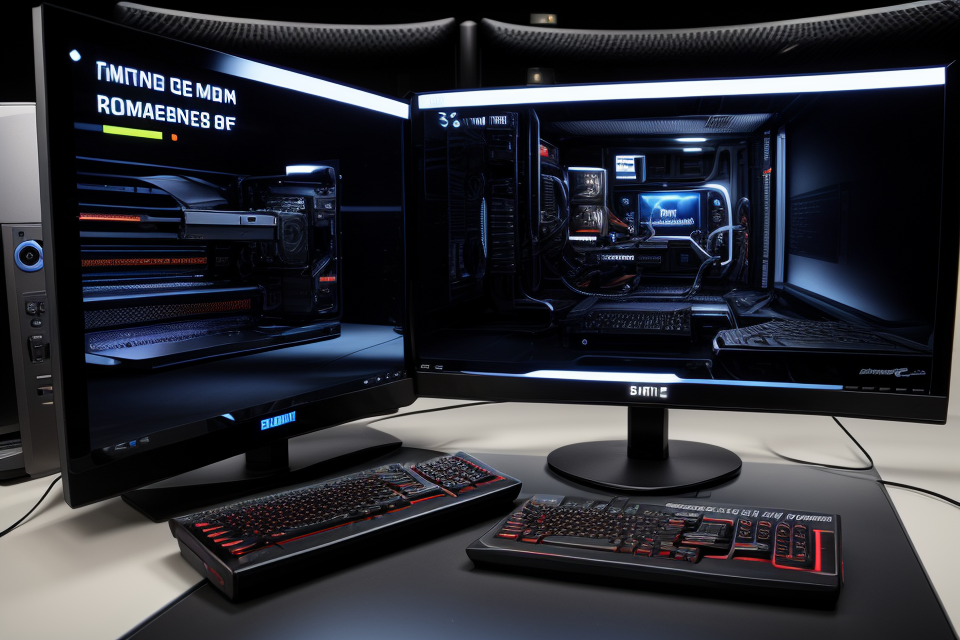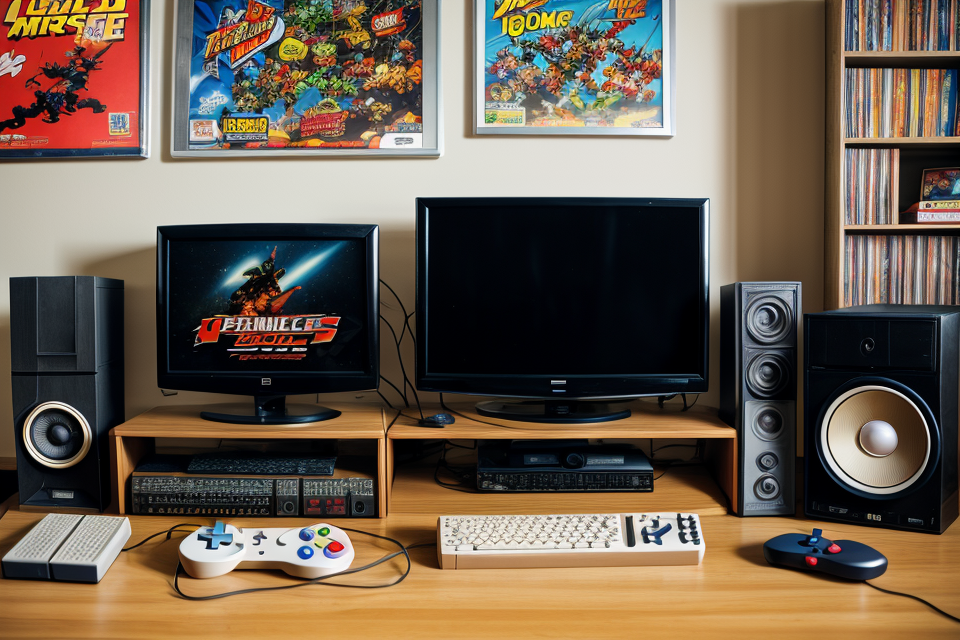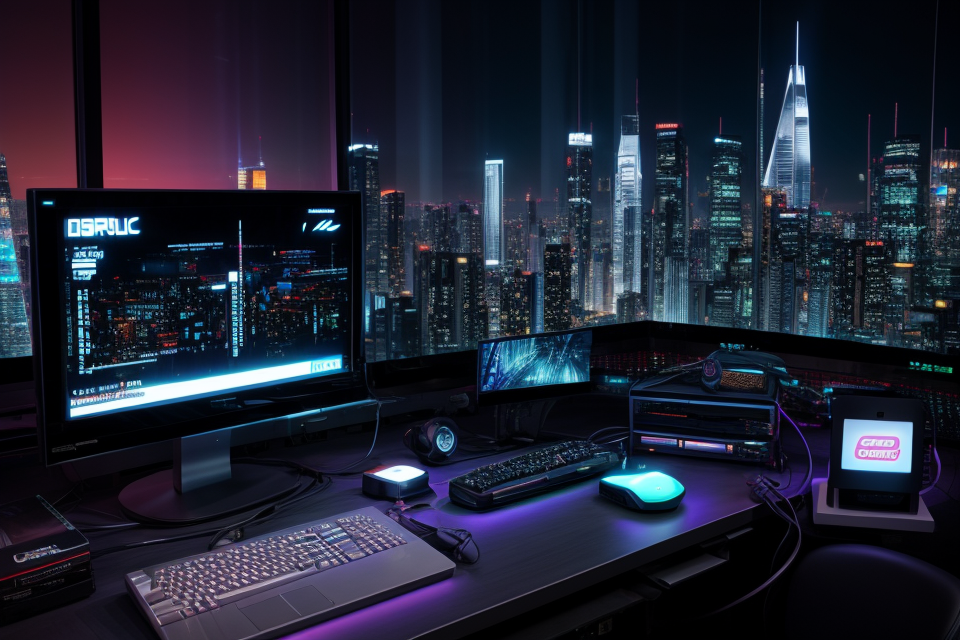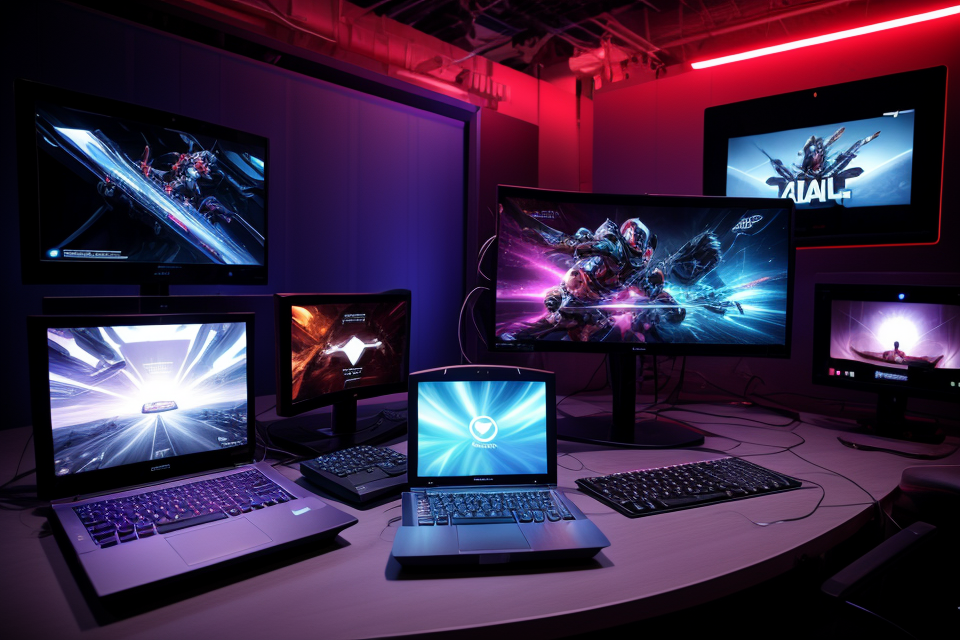
Are you ready to jump into the world of gaming but unsure if your PC can handle it? Worry no more! With the right tools and knowledge, you can easily determine if a game will work on your computer. In this guide, we’ll take a look at the steps you can take to ensure that your PC is up to the task. From checking your system specifications to running a compatibility test, we’ll cover everything you need to know to make an informed decision. So, get ready to game like a pro and discover if your PC is up to the challenge.
Checking the System Requirements
Understanding System Requirements
In order to determine whether a game is compatible with your PC, it is important to understand the system requirements. These requirements specify the minimum and recommended specifications that a computer must meet in order to run the game. They typically include the following components:
- Processor: The processor, or CPU, is responsible for executing instructions and performing calculations. The required processor speed and number of cores may vary depending on the game.
- Memory: Memory, or RAM, is used to store data temporarily while the game is running. The required amount of memory may also vary depending on the game.
- Graphics card: The graphics card, or GPU, is responsible for rendering images and video. Some games may require a specific graphics card or a certain level of performance from the graphics card.
- Storage: The required amount of storage space may vary depending on the game, as well as any additional content or updates that may be required.
It is important to note that meeting the minimum system requirements may not necessarily result in optimal performance or a smooth gaming experience. It is often recommended to meet or exceed the recommended system requirements for the best results.
Locating System Requirements
- Where to find system requirements for a game
- Game developers typically provide system requirements on their official websites or game store pages.
- Look for a section labeled “System Requirements” or “Minimum/Recommended Specifications.”
- Be aware that some developers may only list the minimum requirements, so be sure to check for a “Recommended” or “Optimal” section as well.
- Examples of websites and platforms to check system requirements
- Game developer’s official website
- Game store pages (Steam, GOG, Epic Games Store, etc.)
- Gaming forums and communities (e.g., Reddit, Discord, etc.)
- Technical specifications databases (e.g., CanYouRunIt, SystemRequirementsLab, etc.)
When checking system requirements, make sure to compare your PC’s specifications to the game’s requirements. Pay close attention to the CPU, GPU, RAM, and storage requirements. If your PC meets or exceeds these requirements, you should be able to run the game without any issues. However, if your PC falls short in any of these areas, you may experience performance problems or be unable to run the game at all.
Assessing Your PC’s Capabilities
Overview of PC Components
When it comes to determining whether your PC can run a particular game, it’s important to understand the role that each of your PC’s components plays. In this section, we’ll provide a brief overview of the four key components that are most likely to impact a game’s performance: the CPU, GPU, RAM, and storage.
CPU
The CPU, or central processing unit, is the “brain” of your computer. It’s responsible for executing instructions and performing calculations. In terms of gaming, the CPU’s performance can impact the speed at which the game loads, as well as the smoothness of gameplay.
GPU
The GPU, or graphics processing unit, is responsible for rendering images and handling the visual aspects of the game. A powerful GPU can help ensure that your game runs smoothly and at a high resolution.
RAM
RAM, or random access memory, is used to temporarily store data that the CPU is actively working on. The amount of RAM you have can impact the speed at which your computer can process information, which can in turn affect the performance of the game.
Storage
Finally, the storage on your PC can also impact game performance. This includes both the type of storage (e.g. hard drive or solid state drive) and the amount of storage space available. A solid state drive, for example, can offer much faster load times than a traditional hard drive.
It’s important to note that these are just a few of the many factors that can impact a game’s performance on your PC. However, understanding the basics of each of these components can help you make a more informed decision about whether a particular game is likely to run well on your system.
Identifying Your PC’s Specifications
Locating Information About Your PC’s Components
Before determining the compatibility of a game with your PC, it is crucial to identify the specifications of your computer. To do this, you can locate information about your PC’s components. This information can be found in several places, including:
- The box of your PC, which contains a list of specifications
- The manufacturer’s website, where you can find detailed specifications of your PC
- System information software, such as CPU-Z, HWiNFO, or Speccy, which provide detailed information about your PC’s components
How to Find Information About Your PC’s Components
Once you have located the information about your PC’s components, you can begin to assess whether it meets the minimum requirements for running a particular game. The specifications you need to look at include the CPU, GPU, RAM, and storage.
The CPU, or central processing unit, is responsible for executing instructions and performing calculations. The GPU, or graphics processing unit, is responsible for rendering images and video. RAM, or random access memory, is used to store data temporarily while the CPU and GPU are processing it. Storage, on the other hand, is used to store the game and its files permanently.
It is important to note that meeting the minimum requirements does not necessarily mean that the game will run smoothly. You may experience performance issues or bugs if your PC does not meet the recommended requirements. Therefore, it is always a good idea to check the recommended specifications as well.
Comparing Your PC’s Specifications to the Required Specifications
Identifying Incompatible Components
When it comes to determining whether your PC can run a particular game, one of the most important factors to consider is whether your system’s components meet the required specifications. This means taking a close look at your PC’s hardware, including its processor, memory, graphics card, and other components, to see if they are up to the task of running the game in question.
One way to identify incompatible components is to check the game’s system requirements, which are typically listed on the game’s official website or in its documentation. These requirements will give you a clear idea of the minimum and recommended specifications that your PC needs to meet in order to run the game smoothly.
Once you have identified the required specifications, you can compare them to your PC’s current hardware configuration to see if any of your components fall short. For example, if the game requires a graphics card with at least 4GB of memory, but your current card only has 2GB, then you may experience performance issues or even be unable to run the game at all.
Identifying incompatible components is crucial for ensuring that you don’t waste your money on a game that your PC can’t handle. It can also help you make informed decisions about upgrades or replacements to your hardware, so that you can get the most out of your gaming experience.
It’s important to note that even if your PC meets the minimum specifications for a game, you may still experience performance issues or other problems. This is because many games are designed to take advantage of more powerful hardware, and may not run smoothly on systems that are just meeting the minimum requirements. For this reason, it’s often a good idea to aim for the recommended specifications, if possible, in order to get the best possible gaming experience.
Suggestions for Upgrading
Upgrading your PC’s components can be a great way to meet the required specifications for running a particular game. Here are some recommendations for upgrading your components:
- If your CPU is outdated, consider upgrading to a newer model with better processing power.
-
Look for CPUs with a higher clock speed and more cores for better performance.
-
If your GPU is not powerful enough, consider upgrading to a higher-end model with more graphics memory and a higher clock speed.
-
NVIDIA and AMD are two popular manufacturers of high-end GPUs.
-
If your RAM is insufficient, consider upgrading to a higher amount.
-
Most games require at least 8GB of RAM, so consider upgrading to 16GB or more for optimal performance.
-
If your storage is limited, consider upgrading to a larger hard drive or solid-state drive (SSD).
- SSDs are faster and more reliable than hard drives, and can significantly improve your game’s loading times.
Upgrading your PC’s components can provide numerous benefits, including improved performance, smoother gameplay, and the ability to run games at higher graphics settings. Additionally, upgrading can extend the lifespan of your PC and improve its overall performance for other tasks as well.
Other Factors to Consider
Driver Updates
Maintaining up-to-date drivers is crucial for ensuring optimal performance and compatibility when running games on your PC. Drivers are software components that allow your operating system to communicate with your hardware. Outdated drivers can cause conflicts, instability, and even prevent games from running altogether.
To keep your drivers up to date, follow these steps:
- Visit the manufacturer’s website: Most hardware manufacturers provide drivers for their products on their official websites. Visit the website of your motherboard, graphics card, or other relevant hardware manufacturer to download the latest drivers.
- Use driver updater software: There are various third-party driver updater tools available that can automatically scan your system and update your drivers. Some popular options include DriverBoost, DriverFix, and Advanced Driver Updater. Be cautious when using these tools, as they may sometimes install unnecessary software or charge for features that are available for free.
- Enable automatic driver updates: Some motherboard manufacturers offer features that automatically update drivers when new versions are available. Check your motherboard’s documentation or BIOS settings to see if this option is available and how to enable it.
Remember to back up your system before installing any major driver updates, as they can sometimes cause conflicts or instability. It’s also essential to be cautious when downloading drivers from third-party sources, as they may contain malware or incompatible versions that can harm your system. Always verify the authenticity and compatibility of drivers before installing them on your system.
Operating System Compatibility
When it comes to determining whether a game is compatible with your PC, one of the most important factors to consider is the operating system (OS) you are using. The OS is the software that manages computer hardware and enables the installation and execution of applications, including games.
It is crucial to ensure that the game you want to play is compatible with your OS because if it is not, you may experience technical issues such as crashes, freezes, or other errors. Additionally, some games may require specific features or hardware that are only available on certain operating systems.
Some common issues with operating system compatibility include:
- Incompatibility with older OS versions: Many games may not be compatible with older versions of Windows, such as Windows 7 or Windows 8.1. If you are using one of these older OS versions, you may need to upgrade to Windows 10 to play the game.
- Requirements for specific OS features: Some games may require specific features or functions that are only available on certain operating systems. For example, a game may require DirectX 12, which is only available on Windows 10.
- Hardware requirements: Some games may require specific hardware components or configurations that are only available on certain operating systems. For example, a game may require a specific graphics card or processor that is only compatible with Windows.
To determine whether a game is compatible with your OS, you should check the game’s system requirements on the developer’s website or on platforms such as Steam or GOG. It is also important to ensure that your PC meets the minimum hardware requirements for the game, as well as any specific requirements for the OS.
Optimizing Performance
Optimizing performance without upgrading components can be achieved through various techniques. Here are some tips to consider:
- Disable unnecessary background processes: Certain background processes can consume resources and impact game performance. Disabling these processes can help improve your game’s performance.
- Adjust graphic settings: Adjusting the graphic settings in games can have a significant impact on performance. Lowering the resolution, reducing the number of effects, and adjusting the quality settings can help improve performance.
- Manage memory usage: Managing memory usage can help improve performance. Close unnecessary applications, and ensure that your computer has enough RAM to run the game.
- Overclocking: Overclocking your CPU and GPU can help improve performance. However, this can be risky and may void your warranty. It is recommended to do this only if you know what you are doing.
These are just a few of the many techniques available to optimize performance without upgrading components. Understanding how these settings can impact performance can help you make informed decisions to improve your gaming experience.
FAQs
1. What is the Can I Run It tool and how does it help me determine game compatibility on my PC?
Can I Run It is a tool developed by the game publisher, Steam, that helps you determine whether your PC meets the minimum system requirements for a particular game. The tool provides you with detailed information about the hardware requirements of the game, including the CPU, GPU, RAM, and operating system, and compares them to the specifications of your PC. If your PC meets or exceeds the minimum requirements, the tool will indicate that the game is likely to work on your PC. If your PC falls short of the requirements, the tool will provide suggestions for upgrading your hardware to meet the game’s specifications.
2. How can I check the system requirements for a particular game?
To check the system requirements for a particular game, you can visit the game’s page on the Steam store or the developer’s website. On the game’s page, you should see a section that lists the minimum and recommended system requirements for the game. These requirements will include information about the CPU, GPU, RAM, and operating system that your PC needs to meet in order to run the game. You can also use the Can I Run It tool, which is available as a free download from the Steam website, to quickly check the system requirements for any game in your Steam library.
3. What should I do if my PC doesn’t meet the minimum system requirements for a game?
If your PC doesn’t meet the minimum system requirements for a game, you may need to upgrade your hardware in order to run the game. The Can I Run It tool can provide suggestions for upgrading your hardware, such as adding more RAM or upgrading your GPU. Alternatively, you may be able to adjust the game’s graphics settings to reduce the strain on your hardware and improve performance. However, if your PC is significantly underpowered, you may need to consider upgrading to a newer, more powerful PC in order to run the game.
4. How can I optimize my PC’s performance for gaming?
There are several ways to optimize your PC’s performance for gaming. One of the most important things you can do is make sure that your PC meets the minimum system requirements for the games you want to play. You can also try adjusting the game’s graphics settings to reduce the strain on your hardware, or overclocking your CPU or GPU to improve performance. Additionally, you can use specialized gaming software, such as Nvidia’s GeForce Experience or AMD’s Radeon Software, to optimize your PC’s performance for specific games. Finally, keeping your PC’s hardware and drivers up to date can also help improve performance.


